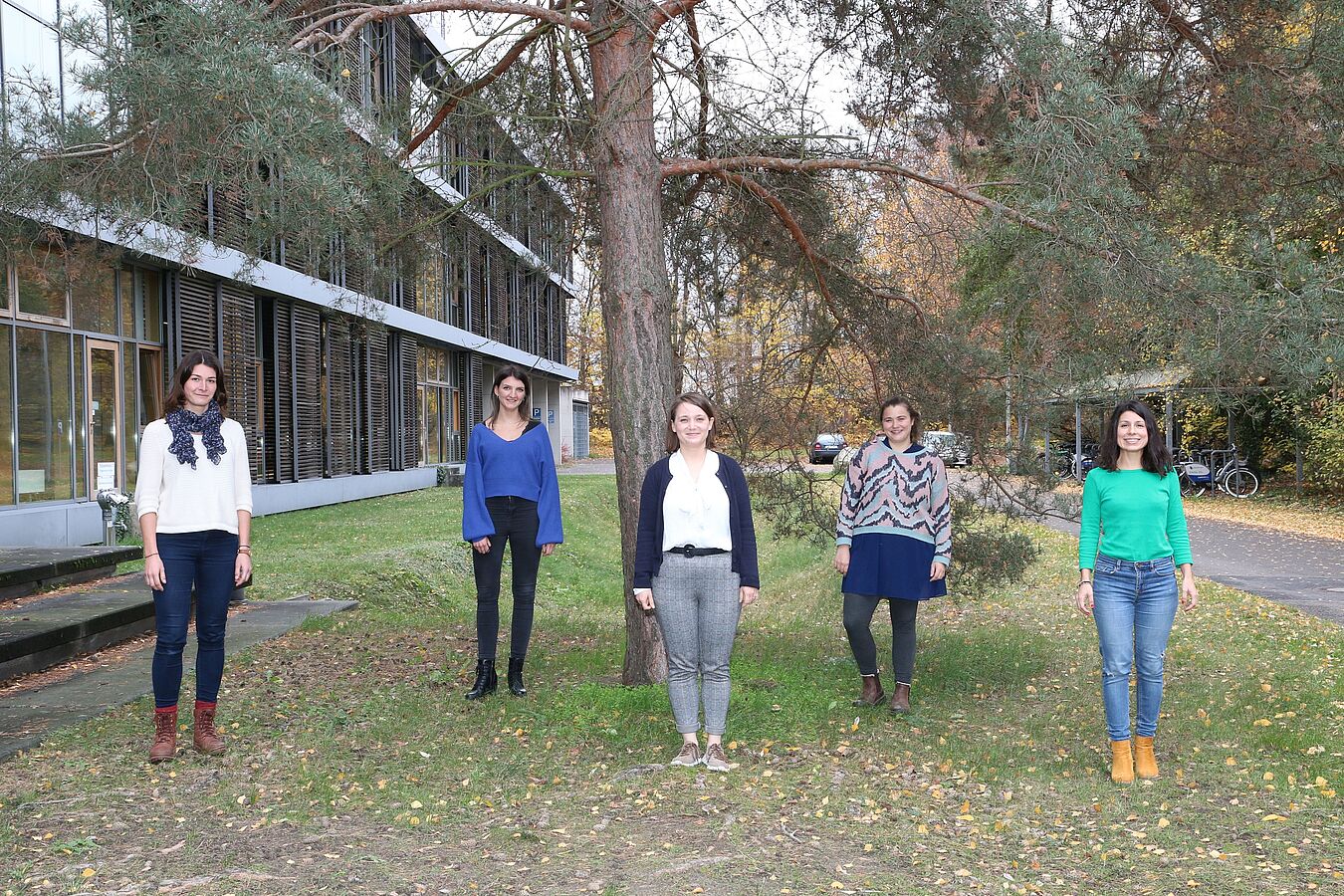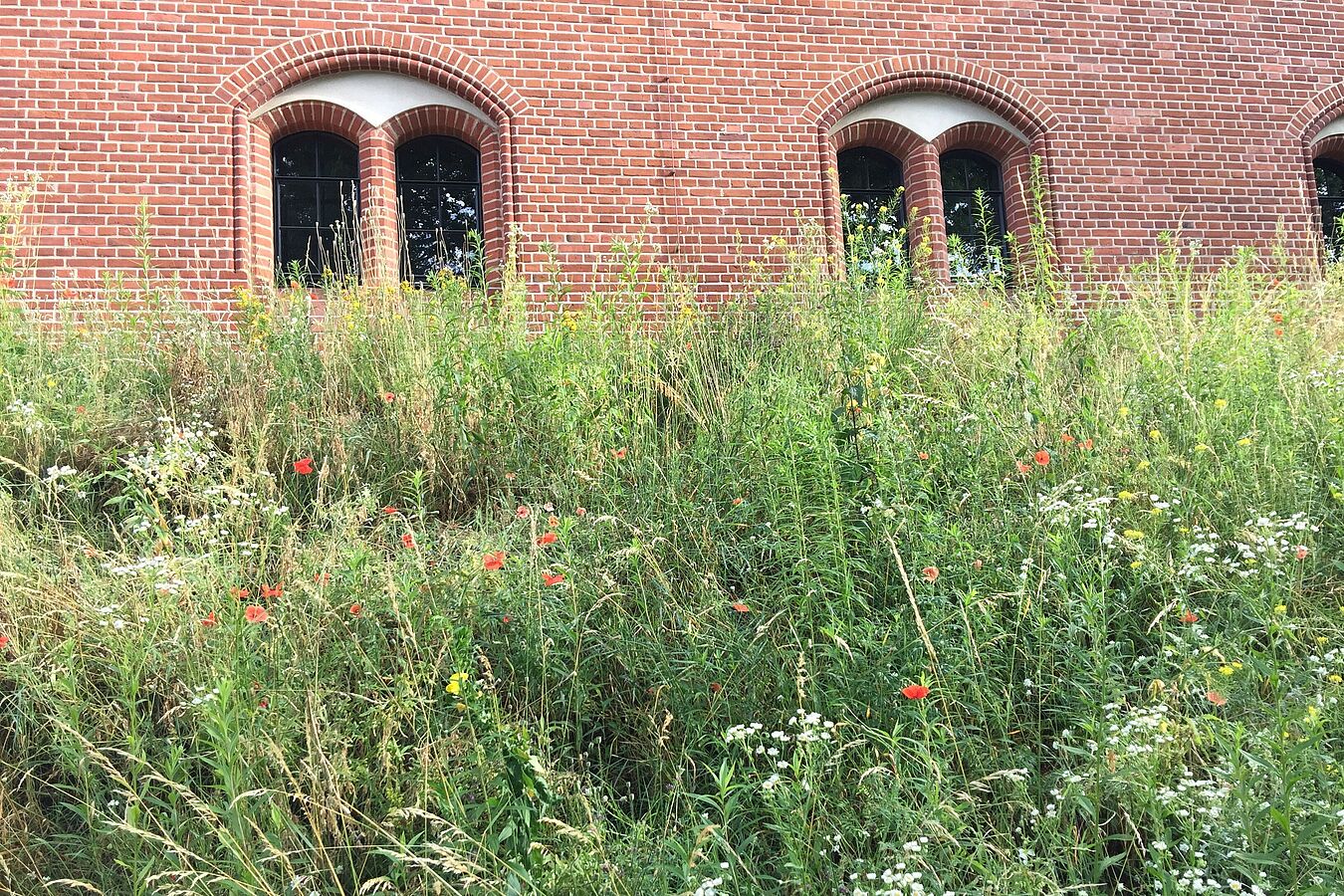Immense energy and water consumption as well as excessive waste generation are unavoidable evils that go hand in hand with research in the natural sciences. Various initiatives emerging in the Forschungsverbund are working to soften this impact and balance the “green” equation inside and outside the institutes.
Estimates say that the world’s biomedical research facilities alone account for nearly 5.5 million tons of plastic waste annually. A year ago, scientists from the Molecular Pharmacology and Cell Biology department of the Leibniz-Forschungsinstitut für Molekulare Pharmakologie (FMP) met to discuss how they could reduce the environmental footprint of their work. “We went through all practices in the lab and identified those that had the highest impact and were easy to change,” says Dr. Dorien Roosen, a postdoctoral researcher at the FMP.
Where possible, they swapped single-use plasticware for glass or metal and introduced new “Reuse & Recycle” system for waste. “Thanks to our technical team, which reconfigured the existing cleaning systems, we now can reuse plastic tubes instead of throwing them away,” continues Roosen. “We also collect the gloves free of hazardous substances and are starting to send them to a partner company, which recycles them into garden furniture. All that is a huge stream of waste that would otherwise be burned.”
But it is not just about waste. Ultra-low temperature (ULT) freezers and fume hoods are notorious energy guzzlers in biomedical laboratories. Here, encouraging new habits is key: the simple act of lowering the hood sash when not in use can cut the energy a fume hood consumes by up to 40 percent. Changing other practices may need more convincing arguments. “About sixty years ago, ULT-freezers entered the market, and scientists began to store their samples at -80 °C and even below to avoid degradation – but no one studied whether this was actually advantageous,” explains Svenja Bolz, a doctoral student at the FMP and cofounder of the FMP Green Initiative. Nowadays, extensive long-term data on sample degradation at different temperatures is available. In light of these findings, the Green Initiative members decided to set most freezers in their lab just ten degrees higher, up to -70 °C, enabling them to significantly cut energy use. “We draw on data and experience from other organizations and always discuss openly with our team before we implement new measures,” says Bolz.
Raising awareness among colleagues forms an important pillar of the initiative. “In addition to annual seminars for the department, we also offer ‘eco-tours’ to introduce new group members to our practices right from the start,” says Dr. Agata Witkowska, a postdoc and a member of the initiative. “Here, we work closely with the technical team – as permanent employees, they can guide multiple generations of researchers and ensure the continuity of the initiative.”
Greening the institute may start with one lab, but it is not ending there. “Forschungsverbund institutes are continuously working to optimize cooling, heating, and ventilation systems, developing smarter ways to use water in labs, and exchanging light sources for more sustainable LEDs,” states Dieter von Buxhoeveden, head of the Construction and Facility Management department at the FVB.
The Leibniz Institute of Freshwater Ecology and Inland Fisheries (IGB) also took a step out and beyond the walls of the building. Two years ago, the institute started a series of actions to optimize the land around its buildings in Berlin Friedrichshagen. “Our main principle is ‘Moving away from the park!’” explains Torsten Preuer from the technical team at IGB. “We want to clear a space for nature, its processes, and its inhabitants.” To stimulate the natural development of the vegetation, the team switched from area-wide to targeted watering, and laid down deadwood hedges and compost heaps. Lawn mowing has been reduced as well: In many areas of the institute’s grounds, the grass grows freely during the blooming phase, offering a habitat for insects. “We try to eliminate invasive plant species, such as knotweeds or black locusts, and allow native species to grow,” says Preuer. A pond is also being created to attract native amphibians.
When embarking on a sustainability journey in an institute, making 180° turns usually are counterproductive. In contrast, smaller steps, such as talking to colleagues and pinpointing relevant and feasible actions, can go a long way. A growing number of international and national organizations and networks, such as the Leibniz Sustainability Management Working Group, are also offering a chance to exchange experiences and collectively reduce the environmental impact of scientific research.
Text: Natalia Stolyarchuk
The text was published in the Verbundjournal 116 | 2021.



